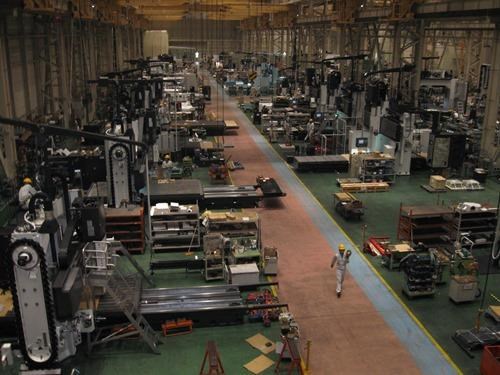Why a Dual-Column Machining Center?
According to this machine tool supplier, a dual-column or bridge-type machining center is 10 times more thermally stable than a comparable “C” style machine.

Dual-column machining centers being produced at Okuma’s production facility in Kani, Japan.
According to machine tool distributor Gosiger, a dual-column or bridge-type machining center is 10 times more thermally stable than a comparable “C” style machine. Because of the dual-column design, says the company, heat affects the bridge structure linearly. The machine expands only in a straight line, allowing dimensional changes to be compensated electronically.
The dual-column design also places the spindle nearer to the center of mass of the machine, increasing rigidity. Read more in Gosiger’s article about dual-column machines.
Related Content
-
Twin Spindle Design Doubles Production of Small Parts
After experiencing process stalls in the finishing stage of production, Bryan Machine Service designed an air-powered twin spindle and indexable rotating base to effectively double its production of small parts.
-
Best Practices: Machining Difficult Materials
Cutting hardened steel, titanium and other difficult materials requires picking the right tools, eliminating spindle runout and relying on best practices to achieve tight part tolerances.
-
An Additive Manufacturing Machine Shop
Finish machining additively manufactured implants requires different pacing and workflow than cutting parts from stock — different enough for an experienced manufacturer to warrant a dedicated machine shop.

.jpg;width=70;height=70;mode=crop)




.jpg;maxWidth=300;quality=90)






.jpg;maxWidth=970;quality=90)